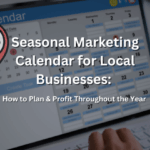CTR (click through rate) of google search result pages isn’t want it used to be. As Google adds more and more elements to the results pages, the organic search results receive much less attention.
What is CTR?
Click-through rate (CTR) is the ratio of users who click on a specific link to the number of total users who view a page, email, or advertisement.
Therefore, if in one month 100 people searched ‘iPhone’ on Google and 15 of them clicked on the top paid ads, the CTR of the top paid ads for that search would be 15% for that month. If 20 of them clicked on the Google Images result, then the CTR of the Google image thumbnails would be 20%. If 10 of them clicked on the first organic result (the #1 ranking website for the search term) that link would have a CTR of 10%. If 1000 people searched iPod and 500 of them clicked on the top ads, then those ads have a CTR of 50%.
CTR Then
In days of old, when there were no Google Images results, nor Youtube, Maps or Google Carousel, etc etc, if a person had the #1 rank of a page in the organic results he could expect a handsome 45% CTR of all searches for that keyword phrase. And if there were no Google Ads on the right side one could get as much as 50-60% (Google Adwords grab around 10% of the clicks). It was this which made SEO a viable form of in-bound marketing.
CTR Now
What kind of CTR can one expect to grab in the organic search results these days? If there are many elements such as Google Maps, Images, Ads, Video, News, Shopping, and Carousel you can expect the number of clicks your #1 organic ranking will grab to be a mere 5%. #2 ranking in the organic? Maybe 4% of the clicks (4% CTR). And it goes down from there.
How is CTR determined?
The more elements Google has on the search result pages the less the CTR will be for the number one organic result. However, not ALL searches these days have tons of elements. You can still find long keyword phrases today which have no elements, and which could get you a CTR of 45% if you ranked at #1.
The higher you are physically on the page, improves your CTR. However, if your website has a bad reputation for poor content (about.com, ezine, etc) and it had the #1 position in the organic results, people would ignore it and look below for better content. So in that case results under #1 would have a higher CTR than the #1 slot.
Future
As Google expands and becomes more sophisticated one can expect more and more elements to be added to their search result pages, thereby lowering the CTR of organic results.
Mobile
Additionally, over 50% of searches these days are on mobile devices. And Google searches on mobile devices are typically dominated by local results, images and other elements, effectively burying the organic search results.
Is there hope?
Yes, stay tuned and next week we will provide the silver lining.






